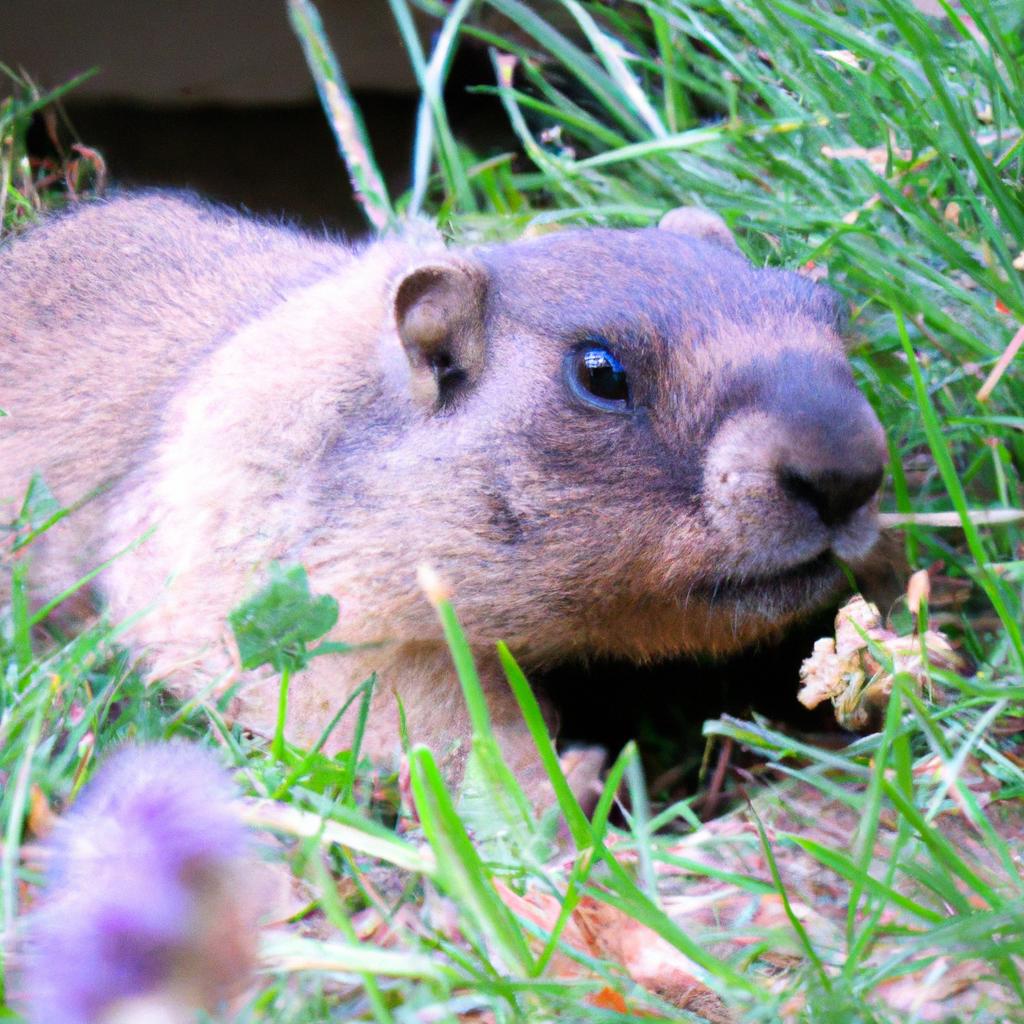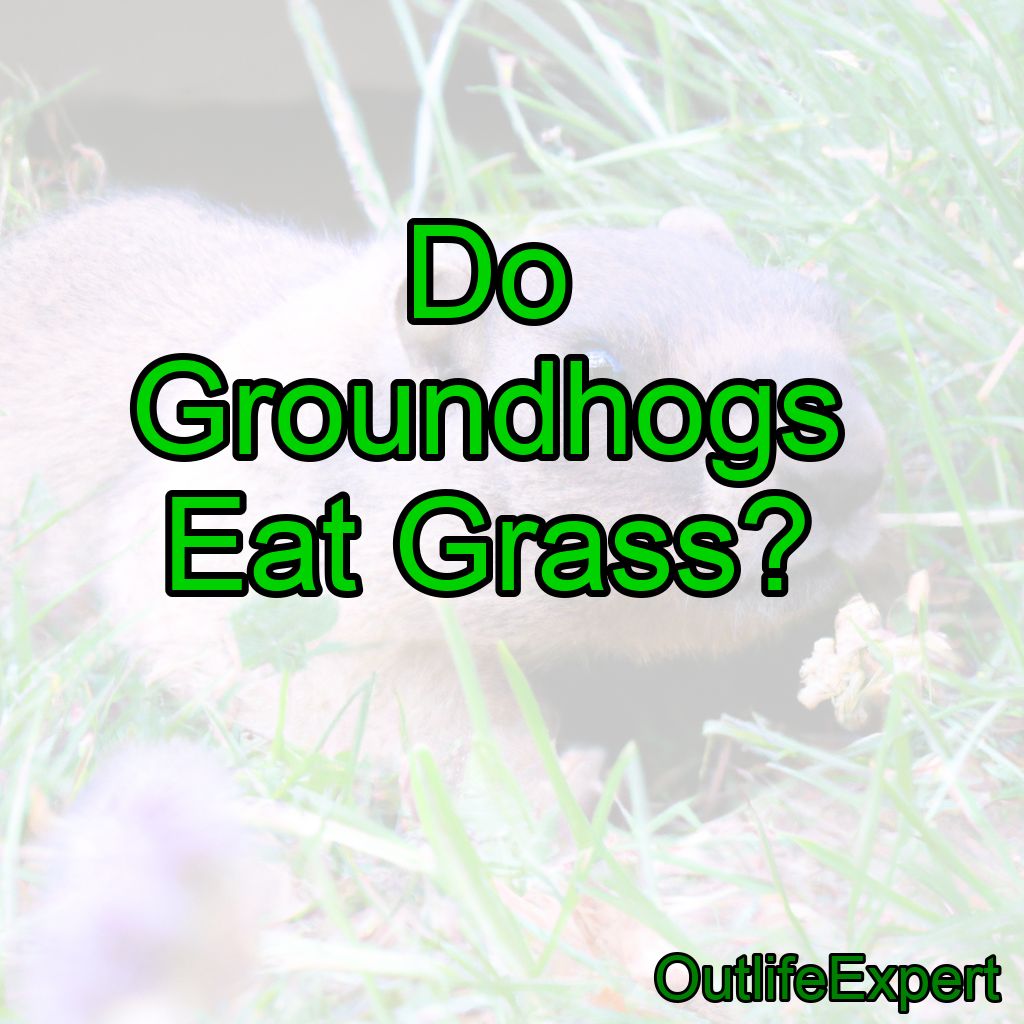As a backyard owner, I’ve always been curious about the eating habits of the various animals that visit my yard.
One critter that has caught my attention recently is the groundhog.
The question I’ve been pondering is – do groundhogs eat grass?
The short answer is yes, groundhogs do eat grass.
But there’s more to the story.
In this blog post, I’ll dive deeper into the groundhog’s diet, when and how they eat grass, and the implications of their eating habits for backyard owners like myself.
Groundhogs and their diet
Before we get into their eating habits, let’s take a moment to understand what groundhogs are. Groundhogs, also known as woodchucks, are rodents that belong to the marmot family.

They are primarily found in North America and are known for their burrowing habits. Groundhogs are known to hibernate during the winter months, which means they spend a significant amount of time eating during the warmer months to prepare for their long sleep.
The Groundhog’s Diet
Groundhogs are primarily herbivores, which means they mostly eat plant matter.
Their diet consists of a wide variety of vegetation, including grass, leaves, flowers, and even tree bark.
They have also been known to eat fruits, vegetables, and occasionally insects.
In general, groundhogs prefer to eat tender, young plants, which is why they often target gardens and lawns.
When Do Groundhogs Eat Grass?
Groundhogs are most active during the early morning and late afternoon.
This is when they will venture out of their burrows to forage for food, including grass.
They are more likely to eat grass during the spring and summer months, as this is when it is most readily available and when they need to consume more food in preparation for hibernation.
How Do Groundhogs Eat Grass?
Groundhogs have sharp incisors and strong jaw muscles, which allow them to easily clip and chew grass. They typically sit on their haunches and use their front paws to hold the grass while they eat, similar to the way squirrels eat nuts.
How Often Do Groundhogs Eat Grass?
During the warmer months, groundhogs need to consume large amounts of food to prepare for hibernation. They will eat multiple times a day, foraging for grass and other plant matter.
However, they do not solely rely on grass as their food source and will also eat a variety of other plants and vegetation.
Implications for Backyard Owners
While groundhogs eating grass might not seem like a big deal, their dietary habits can have some unintended consequences for backyard owners. For one, groundhogs can cause significant damage to lawns and gardens as they forage for food.
They are known to eat flowers, vegetables, and other plants in addition to grass, which can be frustrating for those trying to maintain a beautiful backyard.
Additionally, the burrowing habits of groundhogs can also cause problems. They dig extensive tunnel systems that can undermine the stability of structures, such as sheds, decks, and patios.
This can lead to costly repairs if the damage becomes severe.
Other Animals That Eat Grass
Groundhogs aren’t the only animals that enjoy munching on grass. Other animals that are known to eat grass include:
- Rabbits
- Deer
- Geese
- Cows
- Horses
- Sheep
- Goats
Some of these animals may also frequent your backyard, depending on your location and the availability of food sources.
How To Keep Groundhogs Out Of Your Yard!
There are several things that can be done to prevent groundhogs from digging and eating stuff in your backyard. I will list some of the strategies below.
Also, see my recent post if you want a full list of my favorite methods to keep groundhogs and gophers away!
1. Using ultrasonic sound
Groundhogs, like other bigger mammals that may invade your garden, tend to have very good hearing. This means that loud or consistent noises will scare them away or at least shorten their visits.
Check out my full buying guide for these ingenious ultrasonic repeller devices here!
One of my favorite technologies to keep pests away from my backyard is these cool solar-powered ultrasonic sound emitters that you can buy right from Amazon! In my experience, they really work, and the solar panels on top save you the time and money of changing batteries all the time.
They will also work against other rodents like gophers, mice, and rats!
2. Sprinkling natural repellents
Groundhogs may be scared off by using natural scents such as coyote urine or predator scents.
They may also cause them to leave if there is a combination of sounds being played from a radio. The sounds include the sound of barking dogs and coyotes.
You can sprinkle dog hair, cayenne pepper or strong enteric oils and other natural repellents around the garden to keep the groundhogs away.
See my complete list of humane ways to keep groundhogs away from your yard for more tips and tricks!
3. Fencing around the garden
You can also fence around your garden to keep groundhogs from entering the garden. It should be at least 3 feet deep and have a double row of fencing.
Groundhogs are good diggers so it has to go underground or they may find a way into the garden even with the fences in place!
4. Using live traps
You can use a live trap to capture groundhogs and move them to another area. Live trapping is currently the most humane way of groundhog control. Once you have removed all groundhogs from an area, it is important to ensure that they do not come back by using fencing or other barriers to block access.
You can also just buy a live trap, as the sturdy metal ones shown here:
To lure the groundhogs in, you can use one of the numerous favorite foods of groundhogs or an optimized extra attractive formula like this one to make the catch even quicker!
5. Using natural pesticides
There are pesticides or rodent toxins that can be used to kill groundhogs on your property. These may also affect other animals in the area so it is important to ensure that they are only sprayed on the targeted plants.
I do not recommend these, as I prefer more humane ways as described here. Also, anything that kills an animal will also harm humans to some degree, so go for a repellant rather than a toxin if you go the chemical route!
6. Using Scarecrows
You can use a scarecrow in your garden to keep groundhogs away. Groundhogs are afraid of novelty so time-sensitive or motion-activated scarecrows may also be effective in keeping them out of the garden.
7. Using Lights
Groundhogs are not strictly nocturnal animals but they are most active at low light so they do avoid areas with bright lights.
Motion-activated lights, sounds, and sprinklers may help prevent groundhogs from entering your yard.
Any blinking light will confuse and scare away groundhogs from your yard, especially if they are motion activated and sudden!
8. Motion-activated sprinklers
Like most animals, groundhogs hate surprises, and they will run away if suddenly sprayed with water. I like this solution because it is humane, simple, effective, and does not require much time to set up.
The Havahart 5277 is a motion-activated sprinkler that is activated by the movement of animals up to 25 feet away and sprays them with a harmless water jet, frightening them off and keeping them at bay.
The included metal stake makes it easy to install in your garden, and the sprinkler can be rotated 180 degrees for maximum coverage.
Conclusion
In conclusion, groundhogs do eat grass and can be quite the nuisance for backyard owners.
Their eating habits, combined with their burrowing tendencies, can cause damage to lawns, gardens, and structures.
However, understanding their behavior and diet can help you better coexist with these fascinating creatures and appreciate the role they play in our ecosystem.















